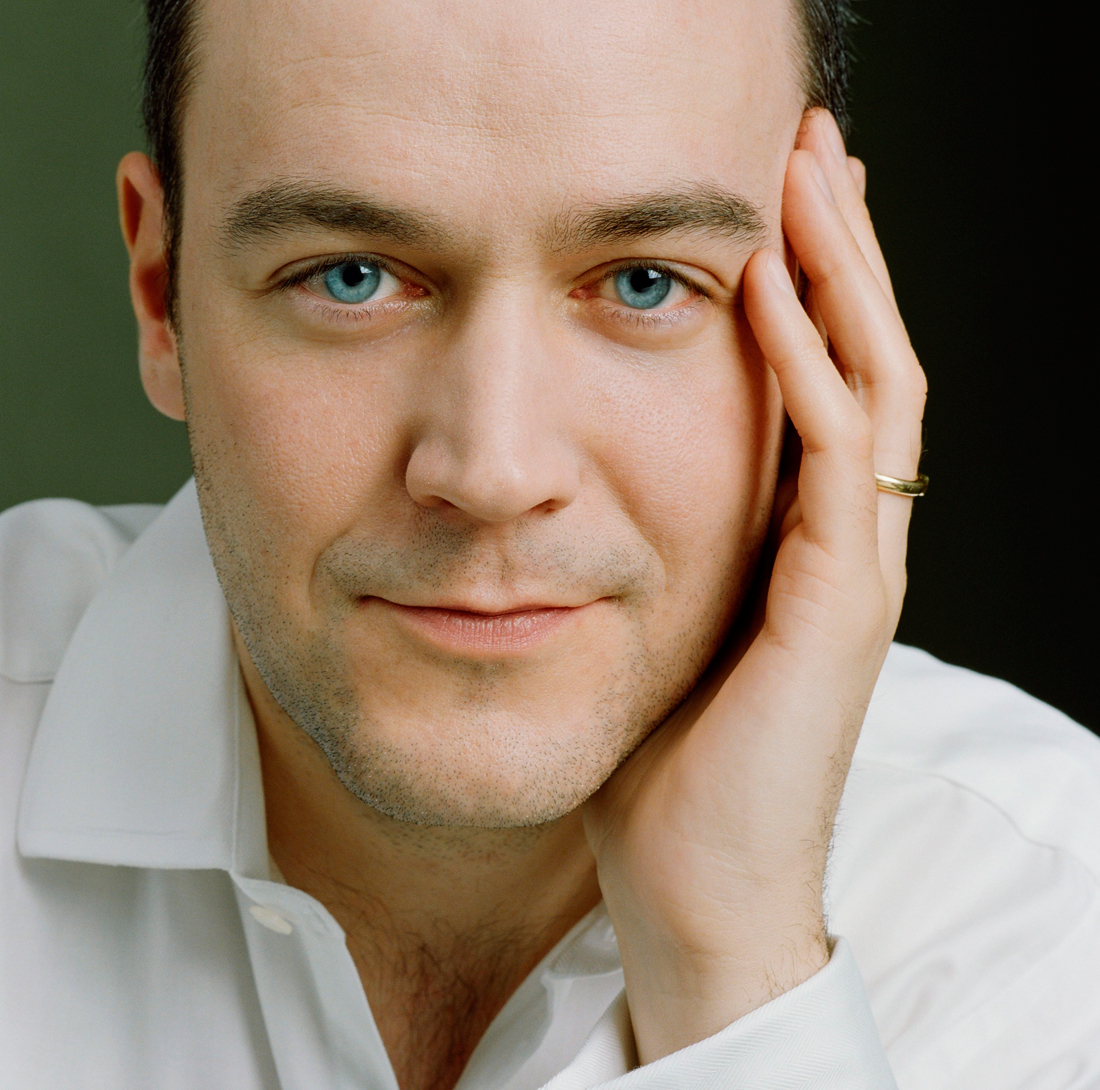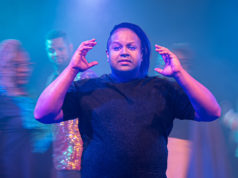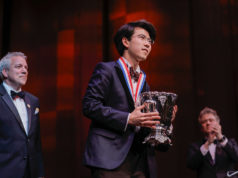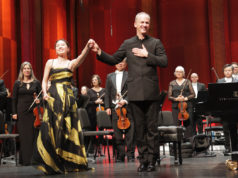Last weekend in Bass Performance Hall, Fort Worth Symphony Orchestra presented its second American Festival, but if the company was expecting an attendance repeat of last year’s successful, inaugural festival, maestro Miguel Harth-Bedoya and company were probably disappointed. The house was full on Friday night but not on Saturday (because of the Cowboys’ preseason game?) or Sunday. A shame, because the three-concert series opening the orchestra’s centennial season featured some wonderful music.
Friday’s performance began with a 30-minute narrated documentary celebrating the orchestra’s anniversary, screened overhead as the musicians unfurled Copland’s Appalachian Spring. But there was a tug-of-war playing out in the sound –– the surging music occasionally drowned out the narrator, and the film seemed too long for a concert program. However, the early historical survey was interesting, showing the 30-member group’s humble, lopsided beginnings in 1912, with only three trombones and two violas and with musicians from the saloons and dens of iniquity in Hell’s Half Acre. (As mentioned in the film, the orchestra went on hiatus during World War II. After reviving in the late 1950s, FWSO ballooned with talent from area schools. Most first chairs were North Texas professors.)
The film’s last few minutes were mostly self-congratulatory and unnecessary, with the orchestra sitting there waiting to speak for itself, which it finally did. After a scratchy beginning to Samuel Barber’s Overture to The School for Scandal (with its exposed introduction for strings), the orchestra, led by associate conductor Andrés Franco, settled down handsomely.
Harth-Bedoya stepped up to lead George Walker’s Lyric for Strings, a piece reminiscent of Barber’s Adagio for Strings but more gossamer in texture, and FWSO’s strings redeemed themselves with their radiant account.
The meat of the evening came with a heroic performance of Bernstein’s Symphony No. 2, subtitled “The Age of Anxiety,” inspired by W.H. Auden’s poem of the same name and scored for piano, a battery of percussion instruments, and orchestra. Here, the piano isn’t a solo concerto instrument. The composer himself is the focus, wrestling with his demons –– Bernstein personally dealt with a recurring loss of faith and hope in a world he saw filled with war and hate, and he expressed his anguish in all three of his symphonies. Franco and FWSO pianist Shields-Collins Bray introduced the piece, together explaining how it unfolds and why, with Harth-Bedoya leading the musicians in brief, explanatory excerpts.
British pianist Leon McCawley picked his way sensitively through the piece’s mood changes. Opening with a thrashing, dissonant morass, the Second Symphony slowly evolves through a series of variations to a place of dull acceptance. It’s a treacherous row to hoe for the pianist, and McCawley handled it brilliantly. Then a miracle arrives in the form of a gentle, jazzy melody. A lift is felt. The piano, joined by a drum kit, double-bass, celesta, xylophone, harp, and chimes, explores the new idea with almost ethereal sounds, and a positive feeling takes hold. The full orchestra joins in a growing anthem of hope, and the piece ends in a tumultuous cry of joy. It’s really one of Bernstein’s greatest moments, and Harth-Bedoya made it one of his here.
Saturday evening featured a luminous performance of Barber’s Violin Concerto, played by Augustin Hadelich, making his sixth appearance with the orchestra in as many years. The performance ended up being the highlight of the festival. His sweet, singing sound; extraordinary technique; and intense involvement with the piece triggered a clamorous ovation, and he responded by delivering a playful account of Paganini’s 19th Caprice as an encore.
Saturday also included a lot of overhead photos. The Evolution of Fort Worth, a series of dazzlingly sharp shots of area scenes taken by associate principal French horn player Alton Adkins, was shown while the orchestra played the third movement of Philip Glass’ Third Symphony, resulting in a much more successful collaboration than opening-night’s documentary.
Sunday was a mixed bag. Pianist José Feghali, Texas Christian University’s artist in residence, performed Gershwin’s Piano Concerto in F. He played well, but his heart didn’t seem in it. The music came alive only in the last movement.
Better was the performance of William Grant Still’s First Symphony, the first symphony written by an African-American. Pleasing but rarely performed, it reaches into the jazzy, bluesy New Orleans style of yesteryear and at times sounds a little like Gershwin exploring the same school. The musicians were stylish and perky as they dived into the piece.
Next season’s festival is still on the drawing board. No word yet on who or what will be included, except that it will not be all American.












